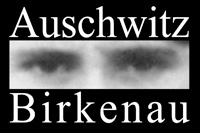




Gas chambers
After the successful test of using gas to kill prisoners in the basement of block 11, the first gas chamber was set up in Auschwitz I. It went into operation in the autumn of 1941 in a converted facility that had previously served as a morgue associated with the first camp crematorium. Soviet POWs and the first groups of Jews sent to Auschwitz were murdered there. The last known case of killing with gas there was in December 1942.
In the spring of 1942, a second gas chamber, known as the Little Red House, went into operation in Birkenau. Another gas chamber, the Little White House, was set up in the middle of that year. Both of these gas chambers functioned until the spring of 1943, when four bigger gas chambers, together with crematoria, began operating in Birkenau. Two of the new chambers were subterranean rooms made to look like showers. Granules of Zyklon B were dumped through openings in the ceiling. Each of them had 210 sq. m of floor space. Two other chambers, with a similar floor space, were situated at ground level and divided into several smaller rooms. The Zyklon B was dumped in through openings in the walls of the buildings.
One of these gas chambers was partially destroyed during the Sonderkommando mutiny in October 1944. The others were partially dismantled after the halt to the extermination of Jews at the beginning of November 1944. All of them were blown up in January 1945. Only the ruins remain. The building of the first gas chamber situated in Auschwitz I is extant.
